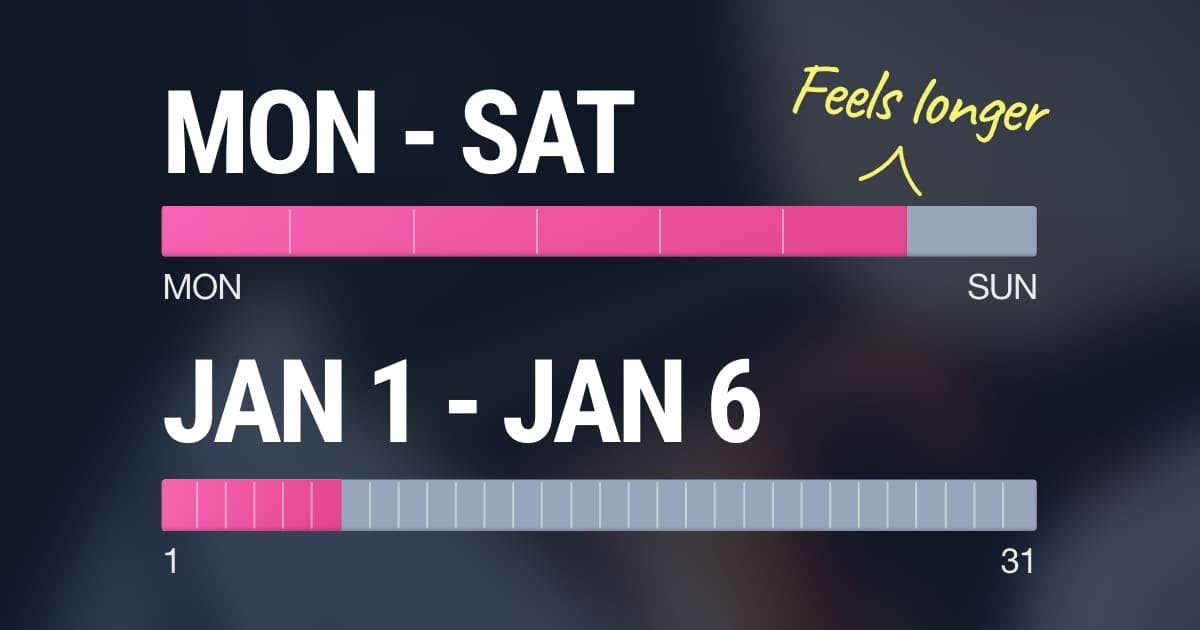Insight of the Week
Time Intervals Feel Shorter in Calendar Dates
New research shows that time windows seem shorter in a calendar framing (Jan 1 to Jan 6) compared to a days-of-the-week framing (Mon to Sat).
Last updated November 17, 2023

Overview
Suppose that it takes 6 days to deliver your product.
How should you frame this duration?
- Days-of-the-Week: Mon to Sat
- Calendar: Jan 1 to Jan 6
Days-of-the-week might seem better, right? These events are constrained within a week, so they might feel shorter.
But surprisingly, calendar dates will make a time interval seem shorter (Sokolova, 2023).
Each frame activates a different scale:
- Monday to Saturday. Weekly scale in which 6 days is 85% wide.
- Jan 1 to Jan 6. Monthly scale in which 6 days is only 15% wide.
Calendar framing has a shorter relative length, which makes the duration feel shorter.
Takeaways:
- Use Days-of-the-Week for Positive Events. Vacations, conferences, festivals. These events will seem longer, helping you justify ticket prices.
- Use Calendar Dates for Negative Events. Shipping, construction, detours. These events will seem shorter, helping you minimize the perceived hassle.
Other New Stuff
- Same Cues, Same Purchases - You repurchase the same brand if this new purchase resembles the previous purchase (e.g., same retailer, same weekday, same basket size; Koll & Plank, 2022).
- Attractive MBA Grads Secure Better Jobs - Even 15 years later. But the effect was less relevant for tech jobs (Malik, Singh, & Srinivasan, 2023).
- Religious People Are Less Likely to Seek Help - They rely on God, not people. This effect happened in various contexts (e.g., applying for government aid, asking for favors, requesting donations from crowdfunding; Liu, 2023).